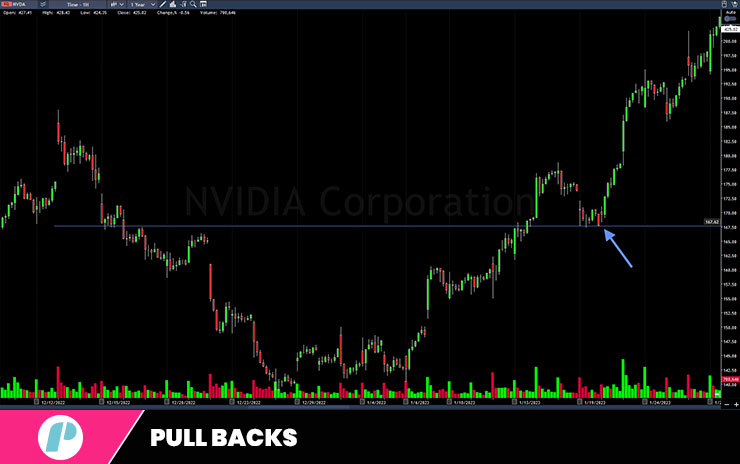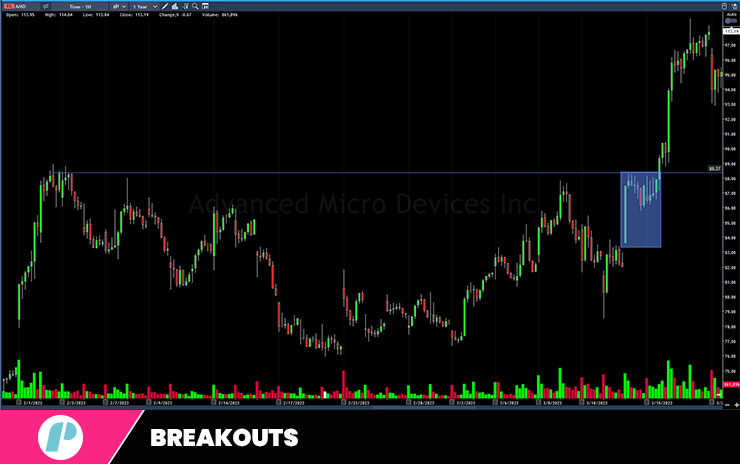
Introduction
So, you’ve decided to to and trade stocks, but you only have little money to invest in this venture? Don’t worry, because in this article, we will guide you on how to invest in stocks for beginners with little money, plus, we’ll let you in on a secret that few traders know, and stock-brokers definitely don’t want you to! So stay put.
Understanding the Basics of Stock Investing
First, just to make sure you’re in the loop, we’ll grasp the fundamental principles of stock trading: Stocks represent ownership shares in companies, and trading in them offers the potential for long-term growth and wealth accumulation. Key concepts such as stock prices, market capitalization, dividends, and stock exchanges play a vital role in understanding how stocks function. Get a grip of these basics and you’ll gain a solid foundation towards investment decisions, even with the little money you have.
Setting Financial Goals
When investing in stocks with limited funds, defining your objectives and determining your risk tolerance are key. Establish clear goals, such as quitting your current job, buying a red Tesla or saving up for the Millennium Falcon lego set, and align your investments accordingly. When you know what you want, what you really really want, it makes the path to reach it – clearer.
Determining Your Risk Tolerance
Now this is a crucial point. Before diving into the world of trading, it’s important to evaluate how comfortable you are with potential ups and downs in the market. Consider the possibility of temporary losses and how you would handle them. As a simple guideline, think about the “X3 rule.” Ask yourself if you would still be okay if you experienced three consecutive days of losses. Would you be able to maintain a clear mindset and make logical decisions, or would it throw you into a whirlwind of emotions? Understanding your risk tolerance and emotional resilience can help you make informed investment choices.
Educating Yourself
Think you can quit school and start trading stocks? Think again my friend, because skipping classes in trading will only make you lose money. Educating yourself is paramount. Learn about stock market terminology, trading options, and research techniques to make informed decisions and maximize the potential of your investments. Don’t be a slacker!
Learning the Stock Market Terminology
Familiarize yourself with terms like “dividends,” “market capitalization,” and “price-to-earnings ratio.” Building a solid foundation of stock market vocabulary will enable you to navigate investment discussions, comprehend financial news, and make informed decisions about your trading.
Understanding Different Investment Options
It’s essential to grasp various investment options. Explore individual stocks, exchange-traded funds (ETFs), and index funds to diversify your portfolio. Only after you understand these options can you make informed choices based on your trading goals and risk tolerance.
Researching Companies and Industries
Conduct thorough research on companies and industries. Analyze financial statements, evaluate competitive advantages, and stay updated on industry trends. This knowledge empowers beginners to make informed investment decisions and identify potential opportunities for growth. They say knowledge is power, but in this case knowledge is money.
Investing vs. Trading
Do you know the difference between investing and trading? If you don’t – read on. If you do – read on, just in case.
Investing involves a long-term approach, aiming to build wealth gradually. Trading, on the other hand, focuses on short-term profit-taking through frequent buying and selling. On a practical level – investing can take years of waiting and hoping, while trading is an ongoing activity, with ups and downs happening on an hourly basis.
Swing Trading vs. Day Trading
Swing trading involves holding stocks for a few days to weeks, capitalizing on price fluctuations. Day trading involves buying and selling stocks on the same trading day. Which kind of trading is more suitable for you? Choose the strategy that aligns with your risk tolerance.
Ask yourself if you are more aggressive in your trading, if you like to be more active, or if you prefer to take it slow. How do you usually deal with losing and making money, and would you be okay if you lost X% of the funds in your account?
Day trading is for you if you like sitting in front of your computer and being active in your trading, making real-time decisions, challenging yourself with this style of trading, and swing is more subtle. It is suitable for you if you have less time for trading, maybe if you are engaged in your job, or if you want to take it easier.
Choosing the Right Brokerage Account
You should learn the different types of brokerage account available and carefully consider the fees and commissions involved. Also, remember that secret I told you about? Well it’s coming up…
Types of Brokerage Accounts
In the world of stocks, there are various types of brokerage accounts to suit different needs. Common options include individual brokerage accounts for personal trading, retirement accounts like IRAs for long-term investing, and margin accounts for borrowing funds to leverage investment opportunities.
Comparing Brokerage Platforms
When comparing brokerage platforms, it is crucial to consider factors such as the platform’s user interface, available research and analysis tools, customer support, trading fees, account minimums, and the range of investment options offered. A thorough evaluation of these features can help traders find a brokerage platform that aligns with their trading style and trading goals.
Your trading style will determine the broker or the platform you would like to use. For example, if you’re a scalper, you would look for a fast execution platform/broker and a right layout and hotkeys to be able to work efficiently. If you’re a short seller in your core, I’d suggest looking for a broker that can provide you with shortable stocks, locate quickly HTB (hard to borrow) and have low extra fees such as locating fees.
Considering Fees and Commissions
This is an important aspect when choosing a brokerage account. You should carefully examine the fee structure associated with the account, including trading commissions, account maintenance fees, and any additional charges. It’s essential to compare the fee schedules of different brokers to find a balance between competitive pricing and the services offered. Evaluating the impact of these fees on investment returns is crucial, as higher fees can eat into profits over time. Additionally, it’s worth considering if the broker offers commission-free trading for certain securities or has discounted rates for frequent traders.
Stock Broker Alternative – Stock Trading Prop Firm
As promised – we’re letting you in on a secret: As of 2022 there’s a new option for stock traders, a perfect solution for both new and experienced traders that lets you invest less money and gain more buying power than brokers can provide. This option is prop trading for stock traders. This model of trading that has been previously only available for Forex traders is now open to stock traders as well when opening an account with “Trade The Pool” stock prop firm. You can invest as little as $97 for a trading account and get additional benefits such as courses, support, free use of advanced scanners and a trading app.
Trading Strategies for Beginners
Now that you’ve got yourself an account, let’s dwell on the 3 most important strategies for beginners trading stocks:
Dollar-Cost Averaging
Dollar-Cost Averaging is a stock trading strategy where taders invest a fixed amount regularly over time, regardless of market conditions. This approach reduces the impact of short-term market volatility and eliminates the need for trying to time the market.
This strategy is recomended for beginner traders because of its simplicity. The concept is that you buy the same asset every month regardless of its state and without deep analysis, as long as you believe that it will reach new highs in time. This strategy will usualy be applied on stocks with low beta (which means that they ‘re correlated with the market indices (companies like AAPL, AMD, etc.). Another option is to apply the DCA on the ETFs of the market such as QQQ (Nasdaq), SPY (S&P 500).
Strategy breakdown
In order to execute this strategy the best possible way, you should first look for an asset that has a potantiel to grow over time.
To find this asset you should look for positve indicators that will supoprt your decicion making such as:
- Company forecast sales / revenue
- New products
- Penetrating to new markets
- New C-level / board members
Pull backs
As you are probably aware, the market and basically any asset move in waves, and after a move to the upside, there will be a correction of the price, or as we call it, a pullback.
A classic pullback – a technical pullback, will be one that moves in the opposite direction of the previous move, but not more than 50% out of it.
The idea of this strategy is to look for a buy signal after the end of the correction and join the ‘bigger picture’ trend.
Beginner traders will find this type of strategy easy to identify and understand due to its clear price movements. As a result, they often choose to trade it during the initial months of their trading career.
Strategy breakdown
- Find a stock that moves in an up / down trend (make sure the trend is not over-extended)
- Wait until the price pulls back to the support/resistance level (the stronger the level the better. If you’re a day trader you should mark the levels from the 1H/4H charts, if you swing trading you should mark the levels from a 3 days / weekly chart)
- Once price holds support/resistance level look for a reversal candle/pattern/consolidation.
*You can always use an indicator such as Exponential Moving Average to give you more indication that there are buyers on that support level.
Breakouts
It is probably the oldest type of strategy that has ever been used by active traders.
In this type of strategy, we will look to trade an asset that builds momentum towards a break of a new high (or short-sell it).
The crucial part in order to succeed in this type of strategy will be to find the right asset to trade on, an asset that shows strength and developing momentum (the heartbeat of the stock, the pace of the movement).
Strategy breakdown
- Find a stock that has been watched by many traders today / last few days/weeks (in most cases it will be major news that drives it)
- Look for a strong and fast move to the upside (the same can apply for short selling)
- After the strong move, you should see the price consolidate at the top 30% of the previous move
- Once it’s ready, the stock should breakthrough that consolidation and continue to climb for a new high/upper resistance level.
Developing a Long-Term Mindset
Developing a long-term mindset is super important for stock traders. It involves focusing on the fundamental value of investments, understanding that short-term market fluctuations are inevitable. Emphasizing patience, discipline, and a strategic approach enables traders to make informed decisions and ride out market volatility for potential long-term gains.
What I’m trying to say, is simply: look at the big picture. don’t let the bumps on the road slow you down, the destination is still the same destination. Here’s how to do that-
The Importance of Patience in Stock Trading
Be patient and stay patient. Patience is vital in stock trading as it allows traders to wait for the right opportunities and avoid impulsive decisions. It enables them to withstand market fluctuations, stick to their trading plan, and potentially benefit from long-term growth and higher returns.
Avoiding Emotional Decision-Making
Emotions like fear and greed can cloud judgment and lead to impulsive actions. By maintaining a rational mindset, traders can make disciplined decisions based on analysis and strategy, increasing the likelihood of long-term success.
I suggest meditating before the opening bell, this will help you moderate your mood, control your adrenaline, which will affect your decision making in real time. Another option is to visualize the trading session. This technique is used by pro traders for many years and also used in other performance-based fields. The idea is to close your eyes and visualize the trade the you are executing, feel what it will be like when you click on the mouse key, when you make a decision to take some profits out of the table, and how do you react if it will go against you. Once you see the full picture it will be much easier to make a logical decision and not let the emotional aspects trigger your behavior.
Staying Informed and Adapting to Market Conditions
Always be informed and adaptive to the market conditions. Regularly monitoring news, economic indicators, and company updates will help you, as a trader, make informed decisions. This adaptiveness allows for flexibility in adjusting strategies and maximizing potential opportunities for success.
Managing Risk
Managing risk is THE important skill to have in stock trading. I can’t stretch that enough, never underestimate risk management. Implementing risk management strategies, such as setting stop-loss orders and diversifying the portfolio, helps protect against significant losses. By carefully assessing and mitigating risks, you can safeguard your capital, preserve long-term sustainability, and improve your chances of achieving consistent profitability. Risk management includes:
Setting Stop-Loss Orders
Setting stop-loss involves placing an order to automatically sell a stock if its price drops to a predetermined level. This strategy helps limit potential losses by allowing traders to exit positions before losses escalate. It adds discipline to trading and protects against unforeseen market downturns.
Understanding Market Volatility
Understanding market volatility in stocks involves being aware of price fluctuations and instability, allowing traders to adjust strategies, manage risk effectively, and make informed decisions in response to market conditions.
Monitoring and Adjusting Your Portfolio
Regularly reviewing the performance of your holdings, analyzing market trends, and considering changes in your investment goals can help identify opportunities and risks. By making adjustments to your portfolio, you can optimize your tradings and adapt to evolving market conditions. Remember, stock trading is not a “set and forget” game, watch your portfolio if you want it to thrive. Here are some ways to monitor you portfolio:
Tracking Performance and Making Adjustments
Utilizing Trading Journals Software
It’s 2023 and stock traders today have tools that weren’t available to traders before. Use these tools, it can only upgrade your trading. They offer real-time updates, performance analysis, and historical data on individual stocks and the overall portfolio. Portfolio tracking tools enable traders to make informed decisions, identify trends, and optimize their trading strategy for better risk management and potential profitability. Do yourself a favor and familiarize yourself with at least one of these tools.
Today there are 3 different software providers for trading journals:
Each one of them has its own unique features but they all serve the same purpose of analyzing your trades, giving you a better understanding of your trading stats and with the right analysis you will be able to find your edge as a trader in the market.
The prices for a monthly use of these programs range from $30 to $80, depending on the plan you choose.
* Now is a good time to let you know that in addition to the many benefits of a having a prop account at Trade the Pool, with most plans you also get a free use of TraderSync!
Reviewing and Rebalancing Your Investments
Regularly assess your portfolio as it allows you to identify overexposed or underperforming assets. Rebalancing involves adjusting your allocation to maintain desired risk levels. This practice helps optimize your portfolio, align it with your trading goals, and adapt to changing market conditions for better long-term performance and profits.
Conclusion
Trading stocks is a long-term game (yes, even if you’re a day trader), and since we’re talking about a performance-based field, we want to continue to grow and improve over time.
To do that we must engage with learning and real-time experience, so we can gather trading data and analyze those results.
Your path to becoming a profitable trader will demand you to take it seriously.
I hope that after reading this you have more confidence about trading in stock with little money. I urge you to educate yourself, set clear goals, and use the right tools for the correct moves.
If you liked this post make sure to share it!









